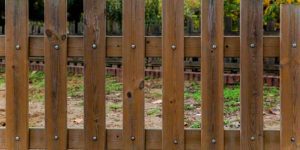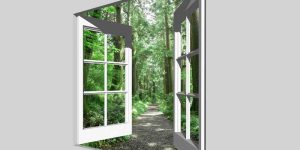Yes, Cedar can be used for framing due to its strength, durability, and resistance to rot. Cedar is a popular choice for framing because of its natural resistance to decay and insects.
Its lightweight properties also make it easier to work with during construction projects. Additionally, Cedar’s aesthetic appeal adds a touch of warmth and natural beauty to any structure. Overall, Cedar framing offers both practical and visual benefits for various building projects.
Introduction To Cedar’s Properties
Physical Characteristics
Cedar wood is known for its beautiful, natural appearance, with a range of warm colors that include hues of red, pink, and brown. Its straight grain and fine texture make it a popular choice for framing, adding a touch of elegance to any structure.
Durability And Resistance
Cedar is naturally resistant to rot, decay, and insect damage, thanks to its high natural preservative oil content. This makes it an excellent choice for framing, offering longevity and minimal maintenance requirements.
History Of Cedar In Construction
Cedar has a long history in construction and can indeed be used for framing. Its natural durability and resistance to rot make it a popular choice for structural purposes, adding both strength and beauty to buildings.
Cedar has been used for centuries in construction due to its natural durability, strength, and beauty. The history of cedar in construction can be traced back to ancient times, where it was used for various purposes, including building temples, ships, and homes. In this section, we will explore the ancient uses and modern applications of cedar in framing.
Ancient Uses
Cedar was highly valued by ancient civilizations, including the Egyptians, Greeks, and Romans, who used it for building structures that have stood the test of time. The Egyptians used cedar to build their famous temples, while the Greeks used it for constructing ships. The Romans used cedar for building their homes and furniture, and it was also used for making musical instruments. Cedar was prized for its natural resistance to rot and insects, making it a valuable commodity in ancient times.
Modern Applications
Today, cedar is still used in construction, particularly for framing. Cedar framing is a popular choice for many builders due to its natural strength, resistance to rot and insects, and its aesthetic appeal. Cedar is also a sustainable choice as it is a renewable resource that is harvested from managed forests. In addition to framing, cedar is also used for decking, siding, and roofing, among other applications.
In conclusion, cedar has a rich history in construction, from ancient times to modern applications. Its natural durability, strength, and beauty make it a valuable choice for framing and other construction purposes.
Comparing Cedar To Traditional Framing Materials
When comparing cedar to traditional framing materials, it’s important to consider key factors such as strength, stability, and cost implications. Let’s delve into these aspects to determine if cedar is a suitable option for framing.
Strength And Stability
Cedar is known for its strength and stability, making it a reliable choice for framing structures.
Cost Implications
While cedar may have a higher upfront cost, its durability can lead to long-term cost savings due to reduced maintenance needs.
Pros And Cons Of Cedar Framing
Cedar framing has its advantages and disadvantages. Cedar is a durable wood that resists rot and insects, but it’s also more expensive than other framing options. Additionally, it can be harder to find in certain areas. However, if you prioritize longevity and aesthetics, cedar may be a good choice for framing.
Advantages Of Cedar
- Cedar is naturally resistant to rot and decay.
- It has aesthetic appeal and adds warmth to a space.
- Cedar is lightweight and easy to work with.
Potential Drawbacks
- Cedar can be more expensive than other framing materials.
- It may warp or split over time if not properly maintained.
- Insect infestation is a possibility with cedar framing.
Cedar’s Impact On Environmental Sustainability
Cedar is a sustainable material for framing due to its durability and eco-friendly properties. Its natural resistance to decay makes it an ideal choice for construction projects focused on environmental sustainability. Using cedar for framing not only ensures structural integrity but also promotes green building practices.
Eco-friendliness
Cedar wood has become a popular choice for framing due to its eco-friendly qualities. Unlike other materials, Cedar is a renewable resource, and it is one of the most sustainable building materials available. Choosing Cedar for framing helps to reduce the carbon footprint, as it requires less energy to produce than other materials such as steel or concrete. Additionally, Cedar is biodegradable and can be easily disposed of without causing any harm to the environment.
Renewability And Recycling
Cedar is a renewable resource and can be harvested sustainably without causing harm to the environment. Cedar trees can grow up to 2 meters a year, which means that they can be harvested more frequently than other trees. The trees also grow in abundance, making it a renewable resource that can be replenished over time. Cedar can also be recycled and repurposed, making it an ideal choice for framing. Recycled Cedar can be used for other purposes such as furniture, decking, and flooring.
In Summary
Cedar wood is an excellent choice for framing due to its eco-friendly qualities. It is a renewable resource that can be harvested sustainably, making it a more sustainable option than other framing materials. Cedar wood is also biodegradable and can be easily disposed of without harming the environment. Furthermore, Cedar wood can be recycled and repurposed, making it an excellent choice for those looking for a sustainable framing option.
Case Studies: Cedar Framed Buildings
When it comes to framing buildings, cedar is a versatile and popular choice for both residential and commercial projects. Its natural beauty, durability, and resistance to decay make it an excellent option for creating structurally sound and visually appealing structures. In this section, we will explore some case studies that highlight the use of cedar in framing buildings, showcasing its effectiveness in different contexts.
Residential Projects
Cedar-framed residential buildings offer homeowners a unique combination of aesthetic appeal and structural integrity. The warm tones and natural grain of cedar create a welcoming and timeless look that enhances the overall design of the home. Additionally, cedar’s inherent resistance to rot, insects, and moisture ensures that the framing will remain strong and durable for years to come.
One notable case study is the Smith family’s lakeside cabin. The cedar framing not only provided a sturdy structure but also complemented the rustic charm of the surrounding environment. The use of cedar beams and posts added character to the interior, creating a cozy and inviting atmosphere.
In another residential project, the Johnsons opted for a contemporary design that incorporated cedar framing. The clean lines and warm hues of the cedar perfectly complemented the modern architecture of their home. The durability of cedar ensured that the framing would withstand the test of time, providing a solid foundation for their living space.

Commercial Structures
Cedar-framed commercial structures offer businesses an opportunity to showcase their commitment to sustainability and design excellence. The natural beauty of cedar can create a positive first impression for clients and customers, while the durability of the material ensures the longevity of the building.
One remarkable case study is the GreenTech office building. The use of cedar framing not only contributed to the building’s LEED certification but also created a harmonious connection with the surrounding landscape. The sustainable and eco-friendly aspects of cedar aligned perfectly with the company’s values, making it an ideal choice for the project.
In another commercial project, the Cedar Grove shopping center utilized cedar framing to create a warm and inviting atmosphere for shoppers. The natural aesthetics of cedar enhanced the overall ambiance, making it a desirable destination for visitors. Furthermore, the resistance of cedar to decay and pests provided the building with long-lasting structural integrity.
Overall, these case studies demonstrate the effectiveness of cedar framing in both residential and commercial settings. Whether it’s for a cozy lakeside cabin or a sustainable office building, cedar offers a multitude of benefits that contribute to the success of the project.
Expert Opinions On Cedar Framing
Expert opinions on cedar framing provide valuable insights into the suitability and benefits of using cedar for framing in construction. Architects, builders, and environmental scientists offer perspectives that can help in making informed decisions about cedar framing.
Architects And Builders
Architects and builders acknowledge the exceptional qualities of cedar for framing. Its durability, strength, and resistance to decay make it a preferred choice for framing structures. Cedar’s natural beauty and versatility also appeal to architects and builders, allowing for the creation of aesthetically pleasing designs and structures.
Environmental Scientists
Environmental scientists recognize the sustainable nature of cedar framing. Cedar is a renewable resource, and its use in framing promotes environmental conservation. The resistance of cedar to pests and rot reduces the need for chemical treatments, aligning with environmentally conscious construction practices. Cedar framing also contributes to improved indoor air quality, as cedar emits a pleasant aroma and has low emissions of volatile organic compounds (VOCs).
Conclusion: Is Cedar Suitable For Framing?
Cedar proves to be a reliable choice for framing due to its natural durability and resistance to rot. Its strength and aesthetic appeal make it a suitable option for various construction projects.
Summarizing Key Points
Cedar is a durable and versatile wood that can be used for framing in construction projects. It offers natural resistance to decay and insects, making it a popular choice for outdoor applications. Additionally, cedar is lightweight and easy to work with, making it suitable for various framing needs.
When considering cedar for framing, it’s important to take into account its cost and availability. While cedar may come with a higher price tag compared to other framing materials, its durability and attractive appearance make it a valuable investment for many construction projects.
Future Outlook
The future outlook for cedar as a framing material looks promising, especially with the growing emphasis on sustainable and eco-friendly building practices. Cedar’s natural resistance to decay and its renewable nature position it as a favorable choice for framing in the construction industry. As advancements in sustainable forestry and wood treatment techniques continue to evolve, cedar is likely to maintain its relevance as a preferred framing material.

Frequently Asked Questions
Is Cedar A Suitable Material For Framing Houses?
Yes, cedar is a popular choice for framing houses due to its natural resistance to decay, rot, and insect damage. Its durability and strength make it an excellent option for framing, providing long-lasting structural support.
What Are The Benefits Of Using Cedar For Framing?
Using cedar for framing offers benefits such as its lightweight nature, ease of handling, and natural resistance to moisture and decay. Additionally, cedar’s aesthetic appeal and sustainability make it an attractive choice for framing projects.
How Does Cedar Compare To Other Framing Materials?
Cedar stands out from other framing materials due to its natural resistance to decay and insects, reducing the need for chemical treatments. It also offers a unique appearance, dimensional stability, and excellent insulating properties.
Conclusion
Cedar can be a great choice for framing due to its natural durability, resistance to decay, and strength. Its lightweight nature also makes it easier to work with, reducing construction time and costs. Additionally, cedar’s beautiful grain and natural oils add aesthetic appeal to any project.
Whether for residential or commercial construction, cedar framing offers both practical and visual benefits that make it a popular choice among builders and homeowners alike.


